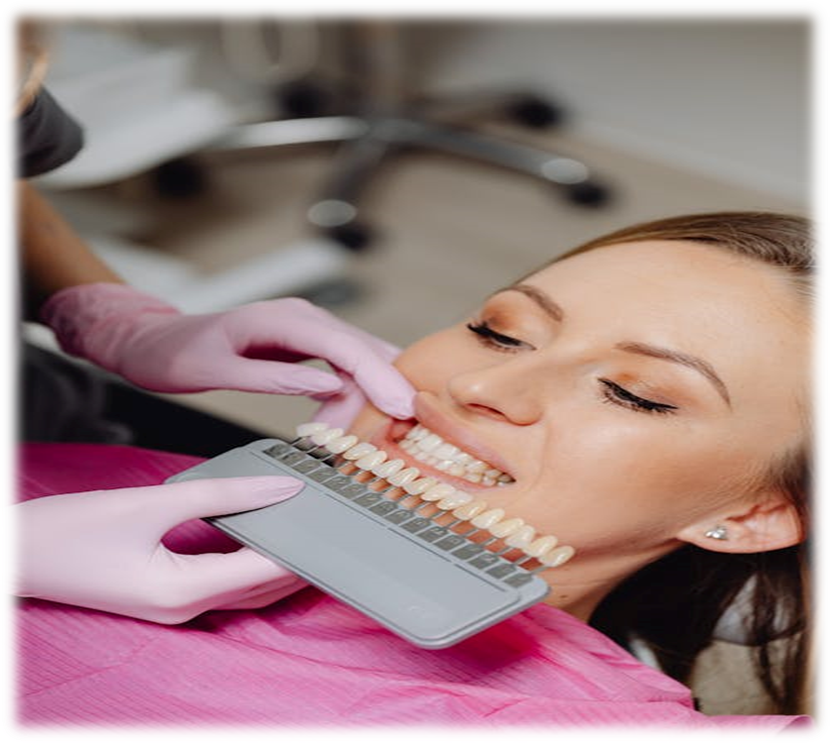Invisalign or Braces? How to Choose the Perfect Fit for Your Smile
Orthodontic

Perfectly aligned teeth boosts confidence and also improves oral health. But with so many orthodontic options available, choosing the right treatment to restore your smile can feel overwhelming.
This article provides a clear comparison of Invisalign and traditional braces, outlining the pros and cons of each.
We’ll examine factors like lifestyle, treatment duration, and cost to help you determine the best path to achieving the smile of your dreams.
Understanding Invisalign: The Invisible Way to Straighten Teeth

Invisalign has revolutionized orthodontic treatment with its innovative approach to straightening teeth. This system uses a series of transparent, removable aligners to gently guide your teeth into their ideal positions. Created with cutting-edge 3D imaging technology, each aligner is custom-designed to ensure a precise and comfortable fit.
A key benefit of Invisalign is its nearly invisible design, making it a popular choice for those who prefer a discreet alternative to traditional braces.
Additionally, Invisalign aligners can be easily removed, allowing you to eat, drink, brush, and floss without limitations. This flexibility not only adds convenience but also supports better oral hygiene during treatment.
Invisalign provides a more comfortable alternative to traditional orthodontic treatments. The aligners are made of smooth plastic, reducing the chances of irritation to your gums or cheeks often caused by metal braces. Plus, Invisalign usually involves fewer trips to the orthodontist, making it a convenient choice for those with busy schedules.
However, it’s important to acknowledge that Invisalign may not be suitable for all orthodontic cases. Complex bite issues or severe misalignment may require the more corrective force of traditional braces. Moreover, Invisalign requires patient compliance. You must wear the aligners for the recommended 20-22 hours per day to achieve optimal results.
Exploring Traditional Braces: A Time-Tested Solution

Traditional braces have been a reliable method of orthodontic treatment. They work using metal brackets attached to your teeth and connected by wires, which apply steady pressure to gradually align your teeth.
Braces are incredibly effective for addressing various orthodontic concerns, from slight crowding to more severe bite misalignments. They offer consistent, precise tooth movement to achieve desired results.
Modern advancements have made braces smaller, more comfortable, and customizable, with options for different colors to suit your personal style. This evolution has enhanced both the effectiveness and the overall experience of wearing braces.
However, braces are visibly noticeable, which can be a concern for some individuals. Additionally, they can make oral hygiene practices like brushing and flossing more challenging, requiring meticulous care to prevent plaque build-up and maintain gum health. Certain food restrictions are also necessary with braces to avoid damaging the brackets or wires.
Comparing Invisalign and Braces: Key Factors to Consider
To help you make an informed decision between Invisalign and braces, let’s compare them based on several key factors. Lifestyle considerations often play a significant role in orthodontic treatment choices. Invisalign offers greater flexibility and convenience due to its removability. You can maintain your usual eating habits, participate in sports activities without concerns, and enjoy easier oral hygiene practices. Braces, on the other hand, require adjustments to your lifestyle, including dietary modifications and careful oral hygiene routines.
Treatment duration can vary depending on the complexity of your orthodontic needs. In general, Invisalign treatment time is comparable to that of braces. However, individual cases may differ, and your orthodontist can provide a more accurate estimate based on your specific situation.
Cost is another important factor to consider. Invisalign and braces are often comparable in cost, although this can vary depending on the provider and the complexity of your case. Discuss the financial aspects with your orthodontist to understand the payment options and insurance coverage available to you.
Aesthetics plays a significant role for many individuals seeking orthodontic treatment. Invisalign’s clear aligners offer a discreet solution, while braces are more noticeable. Consider your personal preferences and how each option aligns with your desired level of visibility.
Oral hygiene is crucial throughout orthodontic treatment. Invisalign allows for easier brushing and flossing due to its removability. Braces require more meticulous cleaning techniques to maintain optimal oral hygiene.
Making the Right Choice: A Personalized Approach
Choosing between Invisalign and braces depends on your unique needs, preferences, and orthodontic condition. The severity of your dental issues plays a significant role. Invisalign works well for mild to moderate concerns, while braces are ideal for addressing more complex cases, including severe misalignments.
Lifestyle is another factor to consider. If you value a discreet, convenient option, Invisalign could be the better fit. However, if you need a powerful and versatile treatment, traditional braces might be the way to go.
To make the best decision, discuss your goals and expectations with your orthodontist. They’ll assess your condition, consider your preferences, and recommend the solution that suits you best.
Beyond the Basics: Additional Considerations
While the core differences between Invisalign and braces are essential, other factors can influence your decision. Technological advancements in both Invisalign and braces have led to improved comfort, efficiency, and treatment outcomes.
Invisalign offers features like SmartTrack material for more predictable tooth movement and Smart Force attachments for enhanced control over complex movements. Braces have evolved with smaller brackets, self-ligating systems for reduced friction, and tooth-colored or clear brackets for improved aesthetics.
Conclusion
Both Invisalign and braces are effective orthodontic treatments capable of creating beautiful, healthy smiles. The ideal choice for you will depend on your specific needs, preferences, and lifestyle. You can make an informed decision by considering factors such as treatment duration, visibility, and oral hygiene requirements.
At Dr. Paul Dental Clinic L.L.C. in Dubai, UAE, we offer a comprehensive range of orthodontic solutions, including Invisalign and traditional braces. Our experienced orthodontists will assess your individual needs and recommend the most suitable treatment plan to achieve your dream smile.
Discover the various types of braces available and find your best fit in our blog on Types of Braces : Discover Your Best Smile with the Essentials.
Book an Appointment With Your Doctor NOW!
Ready for a brighter smile? Schedule your appointment with Dr. Paul’s Dental Clinic today and experience exceptional dental care.



 Dr. Anil Abdul Kaphoor
Dr. Anil Abdul Kaphoor 

